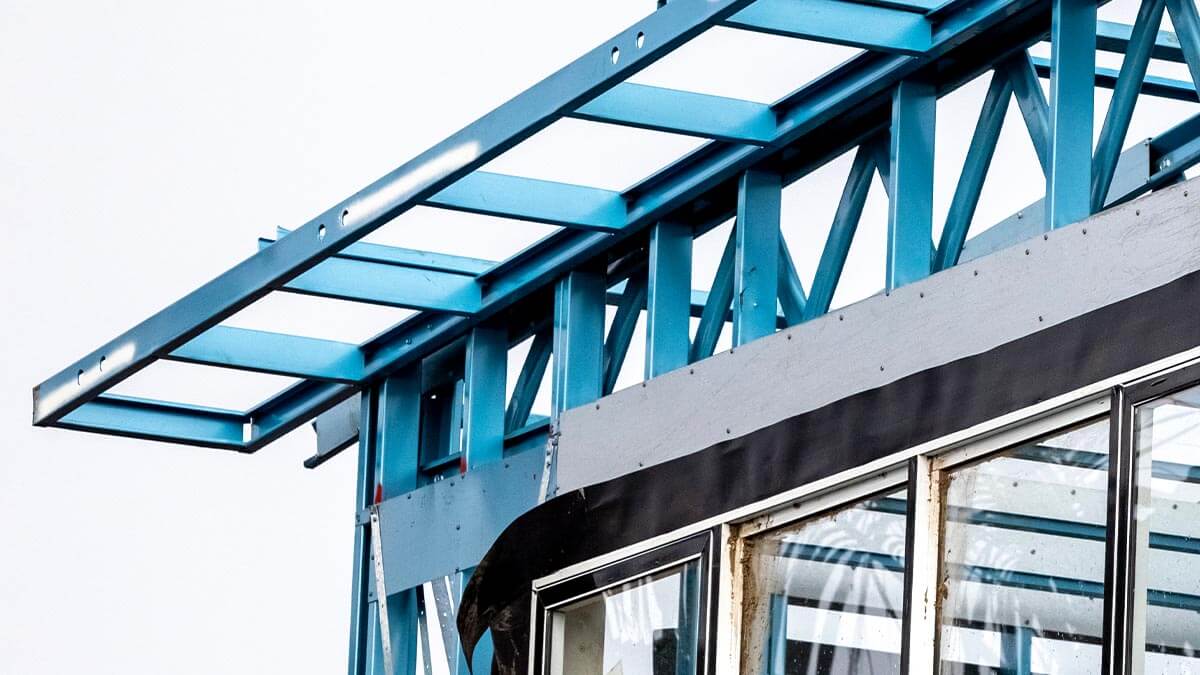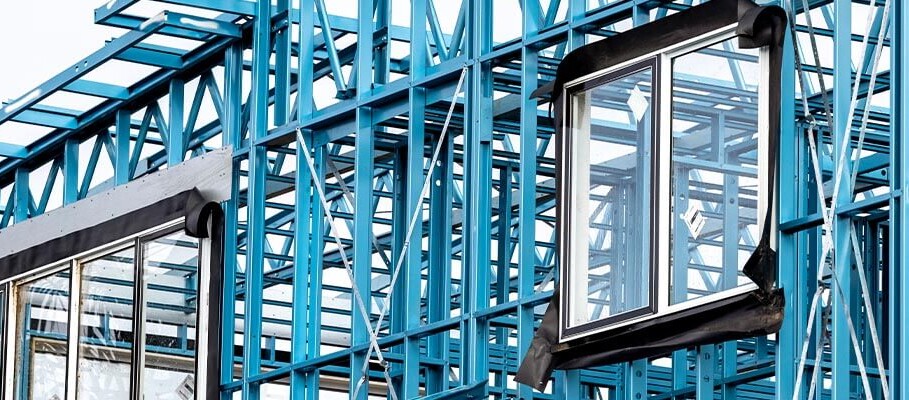Table of Content
- The Rise of Prefabricated and Modular Construction
- Construction Metal Products: The Backbone of Prefabrication
- The Barbie Dream House: A Miniature Model of Modular Efficiency
- Why Houses Built with Construction Metal Products are Ideal for B2B Prefabrication
- Challenges and Considerations in Metal Prefabrication of Houses
- Terraced Houses: Streamlining Urban Development with Metal
- Semi-detached Houses: Balancing Affordability and Privacy
- Detached Houses: Customization and Speed with Metal Prefabrication
- The Role of Construction Agencies in Prefabrication Projects for houses
- Sustainability and the Future of Construction metal products
- Pro Tip: Maximizing Your Sales of Construction Metal Products in the B2B Market
- Conclusion
1. The Rise of Prefabricated and Modular Construction
The construction industry is experiencing a significant shift towards prefabricated and modular construction methods.
Traditional building practices are often time-consuming, labor-intensive, and susceptible to delays due to weather or other unforeseen circumstances.
Prefabrication, on the other hand, involves manufacturing building components off-site in a controlled factory environment.
Modular construction takes this a step further by assembling these components into modules that are then transported to the site and assembled like building blocks. This trend is driven by the need for faster construction timelines, improved quality control, and reduced labor costs.
One key element of these innovative methods is the use of construction metal products.
2. Construction Metal Products: The Backbone of Prefabrication
Construction metal products are integral to the success of prefabricated and modular construction. Metals like steel and aluminum offer exceptional strength, durability, and design flexibility. They are lightweight yet robust, making them ideal for transportation and assembly.
Metal components can be precisely manufactured to exact specifications, ensuring seamless integration in modular units. Their resistance to corrosion and pests also contributes to the longevity of prefabricated structures. They are versatile and are easily cut, welded, and assembled into a myriad of shapes and sizes.
This adaptability makes them perfectly suited for the precision required in prefabricated units. From structural frames to roofing and cladding, Construction metal products play a vital role in ensuring the structural integrity and aesthetic appeal of these modern buildings.
3. The Barbie Dream House: A Miniature Model of Modular Efficiency
The Barbie Dream House, with its snap-together components, offers a surprisingly insightful illustration of the basic principles of modular construction. Upon closer inspection, its "assembly required" nature reveals a valuable lesson about efficiency and standardization in building. Each iteration of the Dream House, from the classic to more recent models, comes with pre-designed, snap-together components: walls, floors, roofs, and even furniture. These parts are engineered to fit together seamlessly, allowing for quick and easy assembly, much like a life-sized puzzle.
This mirrors the core concept of modular construction, where buildings are constructed using prefabricated units or modules. These modules are manufactured off-site in a controlled factory environment, ensuring precision and consistency. They are then transported to the building site and assembled to create the final structure. Therefore, the Barbie Dream House serves as a miniature model, demonstrating how standardized, interchangeable parts can be used to create a complete and functional structure efficiently.
But the analogy goes beyond simple assembly. The Barbie Dream House has evolved over the years, with each new model introducing new features and design elements, while retaining the core modularity. This reflects the adaptability of modular construction in the real world.
Just as new accessories and rooms can be added to it, different modules can be combined and configured to create a wide variety of building types and designs, from houses to offices to schools.
The fact that a child can effortlessly assemble the Barbie Dream House raises an important question for B2B professionals: if a toy can demonstrate such efficiency and adaptability through modularity, shouldn't the construction industry take note?
In its own playful way, it suggests that modular construction, using standardized components like those made from construction metal products, holds the key to building faster, more efficiently, and with greater flexibility. It highlights the potential for streamlining construction processes, reducing waste, and achieving consistent quality through a modular approach. While the scale and materials differ drastically, the underlying principle of efficient assembly through pre-designed, standardized parts is shared between the iconic toy and the cutting-edge practices of modern modular construction.
4. Why Houses Built with Construction Metal Products are Ideal for B2B Prefabrication
For B2B professionals, the benefits of using construction metal products in prefabrication are numerous:
- Faster Project Completion: Prefabrication significantly reduces construction time. Concurrent site preparation and off-site manufacturing streamline the process, leading to quicker project delivery. This faster building process allows for quicker occupancy or sale, accelerating return on investment for developers and investors.
- Enhanced Quality Control: Factory settings allow for rigorous quality checks at every stage of production. This controlled environment minimizes errors and ensures consistent quality across all units.
- Cost Savings: Reduced labor, material waste, and construction time contribute to overall cost savings. The efficient use of materials in a controlled factory environment minimizes waste, further reducing overall project expenses.
- Improved Safety: Manufacturing in a controlled environment is generally safer than on-site construction, reducing the risk of accidents while building the houses.
5. Challenges and Considerations in Metal Prefabrication of Houses
Despite the advantages, there are challenges to consider when using metal prefabrication for houses:
- Transportation: Moving large, prefabricated modules can be logistically complex and expensive.
- Design Flexibility: While customization is possible, modular construction can sometimes limit design options compared to traditional methods.
- Site Preparation: The building site must be adequately prepared to receive and assemble the prefabricated units, with accurate leveling and foundation work being crucial.
- Initial Investment: Setting up a prefabrication facility or partnering with a manufacturer can require a significant upfront investment.
Before making a decision, it's essential to ask further questions. Is metal prefabrication suitable for all types of projects? What are the long-term maintenance requirements of these structures?

6: Terraced Houses: Streamlining Urban Development with Metal
Terraced houses are a common feature in many urban landscapes. They offer an excellent opportunity to leverage the benefits of prefabrication, particularly when using construction metal products. Their uniform and repetitive design makes them exceptionally well-suited for modular construction techniques.
The repetitive nature of terraced houses is ideal for the efficiency of off-site manufacturing. Identical or mirrored units can be produced efficiently in a controlled factory setting, benefiting from the precision and speed that construction metal products offer.
Steel or aluminum structural frames, wall panels, and roofing systems can be manufactured to exact specifications, ensuring seamless integration during on-site assembly. This modular approach is significantly faster than traditional construction methods and minimizes disruption to the surrounding urban environment. Additionally, reduced on-site construction activity can lead to substantial cost savings, benefiting both developers and future homeowners.
Beyond speed and cost-effectiveness, metal's inherent durability makes it an ideal material for terraced houses in densely populated areas. Construction metal products provide excellent resistance to fire, pests, and weather, ensuring these homes can withstand the test of time and the challenges of urban living.
The longevity of metal construction also contributes to the overall sustainability of these projects, reducing the need for frequent repairs or replacements. Furthermore, using metal in terraced houses allows for greater design flexibility. For instance, the strength of steel allows for larger windows and open-plan interiors, maximizing natural light and creating a sense of spaciousness within the typically compact footprint of a terraced home.
7. Semi-detached Houses: Balancing Affordability and Privacy
Semi-detached houses offer a balance between affordability and privacy, making them a popular choice for many homebuyers.
Prefabrication with construction metal products can further enhance their appeal. The speed and efficiency of modular construction can make these homes even more cost-effective. Metal's sound insulation properties can also contribute to increased privacy between the two units.
Also, prefabricated metal components in houses can improve sound insulation between units, a crucial factor for comfortable urban living. By incorporating specialized metal panels and insulation materials during the manufacturing process, noise transmission between neighboring homes can be significantly reduced.
As cities continue to grow, and the demand for efficient and sustainable housing increases, the combination of housing designs and metal prefabrication offers a strong solution for urban development. It allows us to build better houses, faster, using quality construction metal products.
8. Detached Houses: Customization and Speed with Metal Prefabrication
Even for detached houses, where customization is often a priority, metal prefabrication offers significant advantages.
While modular construction might seem to limit design freedom, advancements in technology and manufacturing processes now allow for a high degree of customization in prefabricated units.
Homebuyers can enjoy unique designs while still benefiting from the speed and efficiency of prefabrication. Furthermore, metal's inherent strength allows for larger open-plan spaces and innovative architectural features that might be more challenging to achieve with traditional construction methods.
9. The Role of Construction Agencies in Prefabrication Projects for Houses
Construction agencies play a crucial role in facilitating the adoption of prefabricated and modular construction, particularly for houses.
These agencies can connect developers with manufacturers, provide expertise in design and engineering, and manage the logistics of transportation and assembly. They provide project management expertise, ensuring that projects stay on schedule and within budget. They are instrumental in navigating the complexities of permits, regulations, and inspections related to prefabricated construction. Their involvement can streamline the entire process, making it more accessible to B2B professionals.
Also, to source suppliers for construction metal products, you can submit a request for quotes at: https://www.europages.fr/en/rfq.

10. Sustainability and the Future of Construction metal products
Sustainability is a growing concern in the construction industry. Construction metal products, particularly steel, are highly recyclable, making them an environmentally responsible choice.
Prefabrication itself also contributes to sustainability by reducing construction waste and improving energy efficiency. The controlled factory environment allows for better material management, minimizing waste and maximizing the use of recycled materials. As the industry moves towards greener building practices, the role of metal in prefabrication will only continue to grow.
For a broader perspective on minimizing environmental impact, numerous organizations worldwide offer guidance on Best Practices for Reducing, Reusing, and Recycling Construction and Demolition Materials. These resources provide practical strategies for builders, construction teams, and design professionals to divert construction and demolition materials from landfills.
For more information about recycling solutions, read these insightful articles:
- How companies can benefit from green skills
- A turbulent economic outlook for the UK: how will SMEs fare?
- Green IT: Environmentally-friendly digitalization
11. Pro Tip: Maximizing Your Sales of Construction Metal Products in the B2B Market
As a supplier of construction metal products, understanding the diverse needs of your B2B clients is paramount. Whether they're involved in large-scale infrastructure projects, commercial buildings, or specialized industrial applications, these clients prioritize quality, compliance, and reliable supply chains.
To maximize your sales, focus on providing comprehensive product information, including detailed technical specifications, relevant certifications (ISO, ASTM, etc.), and clear indications of material origin and sustainability. Highlight the versatility and performance advantages of your construction metal products, emphasizing factors like durability, corrosion resistance, strength-to-weight ratio, and adaptability to various fabrication techniques. Offer exceptional customer support through expert consultations, customized solutions, and efficient logistics.
Building strong relationships with construction agencies, engineering firms, and contractors is crucial. Finally, showcase successful projects and provide compelling testimonials that demonstrate the value and reliability of your products in real-world applications.
If you need help promoting your business and connecting with qualified B2B buyers, contact our team ! europages can assist you in optimizing your online presence and reaching the right target audience across various industries.

Conclusion
The Barbie Dream House, in its own playful way, foreshadows a significant trend in the construction industry.
Prefabricated and modular construction, powered by construction metal products, is transforming how we build. From terraced houses to semi-detached houses and detached houses, metal prefabrication offers a faster, more efficient, and sustainable approach to construction.
But the evolution doesn't stop here. The future of metal prefabrication is ripe with potential. What new innovations might emerge in the field of metal prefabrication? We can anticipate advancements in areas such as robotic automation, 3D printing of metal components, and the development of new high-performance alloys with enhanced properties. Imagine self-assembling modular units or buildings that can adapt and reconfigure themselves based on changing needs.
The B2B companies that embrace innovation and forge strategic partnerships will be the ones best positioned to capitalize on the transformative potential of metal prefabrication and shape the future of the built environment.
Find houses and construction solutions for your Project!
- TRINMAK MACHINE ENGINEERING AND INFORMATION TECHNOLOGIES INDUSTRY provides turnkey steel solutions, from pre-engineered buildings to precision components and automation systems, all crafted with cutting-edge technology and a commitment to quality.
- PREFABEX MODULAR BUILDING SOLUTIONS is a leading provider of prefabricated solutions, including modular buildings, houses, cabins, and steel structures. With global reach and on-site assembly teams,. They deliver quality projects across Europe, Africa, the Middle East, and Latin America.
- SCHÖNLEITNER BAU GMBH provide complete construction solutions: materials trading, design, planning, and turnkey project completion for residential and commercial buildings.
- VOSSE SP. Z O.O. specializes in steel fabrication, producing parts, structures, and finished products for diverse industries. From industrial facilities and shipbuilding components to construction elements, they deliver EN 1090 and ISO 3834-2 certified quality, including design, assembly, and delivery.
- GREEN WORLDv crafts beautiful and sustainable dome and frame houses. Using CNC technology and eco-conscious materials, they deliver high-quality, affordable houses with innovative, easy-assembly designs.
- PERGEL METAL offers precision metal fabrication, CNC machining, and electrostatic powder coating. Since their start in a small workshop, they've expanded to a 4,000 m² facility, serving leading companies with a commitment to quality, on-time delivery, and competitive pricing.

